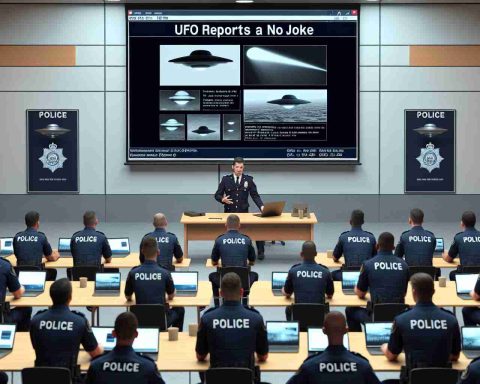The complexities surrounding Marian apparitions and their impact on religious belief have stirred deep reflections among followers. During broadcasts on LT14 Radio General Urquiza between 1988 and 1994, Gustavo Fernández navigated this intricate landscape, sharing insights about how these spiritual phenomena resonate with the public.
Discussions on the New Age Movement intertwined with themes of religion and fundamentalism, revealing a spectrum of beliefs that challenge the status quo. Listeners were prompted to consider the contentious nature of faith, where differing opinions often lead to heated debates among believers. The claims of miraculous healings attributed to the Virgin sparked curiosity and skepticism alike.
In his program, Fernández highlighted critical voices, including the thoughts of Salvador Freixedo, who delved into the intersection of divine encounters and extraterrestrial phenomena. He noted that individuals tend to seek validation for their existing beliefs rather than embrace uncomfortable truths.
The exploration of these topics remains vital, as they touch on the collective human experience of seeking meaning and connection. The ongoing dialogue invites audiences to reflect on the nature of faith and its manifestations in contemporary society. For further insights and discussions, listeners can dive deeper into related content on platforms dedicated to the mysteries of belief and existence.
The Cultural Reverberations of Marian Apparitions
The fascination with Marian apparitions not only shapes personal belief systems but also influences the broader cultural landscape. As narratives of miraculous healings and divine visitations circulate, they underscore a growing cultural tension between traditional religious practices and emerging spiritual movements. This friction often manifests in religious communities grappling to define their identity amidst changing societal values.
The global economy is not insulated from these spiritual phenomena. The pilgrimage to sites of reported apparitions, such as Lourdes and Fatima, generates significant economic activity, drawing millions of visitors annually. These spiritual journeys stimulate local economies, prompting the development of tourism infrastructure and services. Furthermore, as believers invest in related products, from religious souvenirs to spirituality-themed media, a niche market emerges, bolstering sectors like retail and digital content creation.
Environmental implications also arise as increased foot traffic in pilgrimage areas may lead to ecological strain on natural landscapes and sanctuaries. Future trends suggest that as global connectivity increases, the influence of digital platforms could amplify the reach and appeal of these spiritual narratives, forging new communities of believers across geographical bounds.
In essence, Marian apparitions are more than mere religious phenomena; they help shape a complex tapestry of societal beliefs and economic frameworks, inviting ongoing reflection on their long-term significance in our interconnected world.
The Hidden Truths Behind Marian Apparitions: A Deep Dive into Belief and Skepticism
Understanding Marian Apparitions
Marian apparitions, or reported supernatural appearances of the Virgin Mary, have fascinated believers and skeptics alike. They draw attention not only due to their spiritual significance but also because of their complex implications for religious belief and cultural discourse. This article explores the nature of these phenomena, the debates surrounding them, and the broader impact on modern spirituality and beliefs.
Insights into Religious Movements
Marian apparitions often intersect with contemporary movements, including the New Age Movement, which blends various spiritual practices and beliefs. This intersection represents a broader search for meaning beyond traditional religious frameworks. It brings forth discussions about the legitimacy and authenticity of experiences tied to Marian sightings, particularly as they relate to personal belief systems and the thirst for divine intervention.
Common FAQs About Marian Apparitions
What are Marian apparitions?
Marian apparitions are reported instances where the Virgin Mary is said to have appeared to individuals, often conveying messages or prophecies.
Are there any scientifically verified Marian apparitions?
While many apparitions are reported and widely believed, none have been scientifically verified in a manner that meets the standards of the scientific method.
How do Marian apparitions affect faith?
These phenomena can reinforce faith among believers while also sparking skepticism and debate about the nature of divine interventions and their interpretations.
What are some famous Marian apparitions?
Notable instances include the apparitions at Lourdes, Fatima, and Guadalupe, which have significant followings and documented testimonies.
Pros and Cons of Belief in Marian Apparitions
Pros:
– Spiritual Comfort: Many find great solace and motivation in the messages they believe come from Mary.
– Community Building: Apparitions often unify believers, fostering a sense of community and shared faith.
– Hope and Healing: Reports of miracles and healings have provided hope to many individuals facing illness or hardship.
Cons:
– Skepticism: Critics argue that many reported apparitions lack evidence and may lead to false hope.
– Division Among Believers: Differing interpretations of apparitions can create divisions in faith communities.
– Commercial Exploitation: Some accuse organizations of commercializing spiritual experiences associated with apparitions.
The Role of Technology and Media
Today, the dissemination of information surrounding Marian apparitions is amplified through digital platforms. With social media, believers share their experiences, creating communal narratives that further influence perceptions. Moreover, podcasts and online shows, like Gustavo Fernández’s discussions on LT14 Radio, continue to ignite conversations on the validity and impact of these experiences.
Controversies and Misconceptions
The dialogue surrounding Marian apparitions has not been without controversy. Skeptics argue that many claims are amplified by psychological phenomena or groupthink, leading to shared delusions. Furthermore, some fringe perspectives challenge traditional views by proposing connections with extraterrestrial phenomena, blurring lines between faith and speculative theories.
Conclusion and Future Insights
The exploration of Marian apparitions continues to be a rich field for understanding the complexities of belief in a modern world. As societal attitudes towards spirituality evolve, the debate surrounding these phenomena invites ongoing inquiry. Engaging in these discussions not only reveals the personal and collective quests for meaning but also highlights the diverse spectrum of beliefs that shape our understanding of the divine.
For more enlightening discussions on belief and spirituality, visit LT14 Radio for further insights.




















